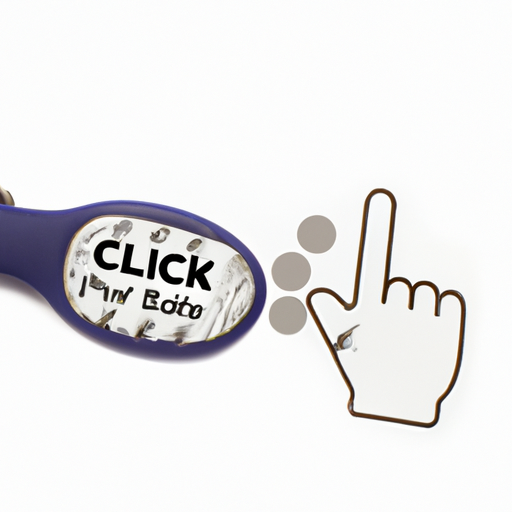A clicker, in the world of dog training, can be your best ally. But what is it exactly? How does it work? And, most importantly, how can you use it to train your beloved furry friend? As a caregiver, it’s important to understand these tools to provide the best care for your dog. Let’s dive into these questions.
H2: The Basics of a Dog Clicker
A dog clicker is a small handheld device that emits a distinct “click” sound when pressed. This sound is used to signal to your dog that they have done something right, and a reward is coming their way. The concept behind it is simple: it’s a form of communication, a bridge between human commands and dog understanding.
- Functionality: The clicker makes a consistent noise, regardless of the person using it. This means that it reduces confusion for your dog, who might get mixed signals from different people’s voices or tones.
- Simplicity: It’s a small, portable device, easy to carry during walks or training sessions.
- Effectiveness: The clear, distinct sound helps your dog quickly understand that they’ve done well.
H2: The Science Behind Clicker Training
Clicker training is based on a psychological concept known as operant conditioning. This term might sound complicated, but don’t worry, it’s quite straightforward when broken down:
- Positive Reinforcement: When your dog performs a desired behavior, you click and then reward them with a treat, praise, or a toy. Over time, they associate the click with the reward and, by extension, the behavior with both.
- Negative Punishment: If your dog does not perform the desired behavior, there’s no click and no reward. This absence is not harmful or painful; it simply means no positive outcome.
So, with each successful behavior, they’re more likely to repeat it in anticipation of the reward.
H2: How to Use a Clicker for Dog Training
Using a clicker for dog training involves a few key steps:
- Loading the Clicker: This involves creating an association between the click sound and a reward. Click the device and immediately give your dog a treat. Repeat this several times until your dog understands the connection.
- Timing: Click at the exact moment your dog performs the desired behavior. This precise timing helps your dog understand what behavior is being rewarded.
- Consistent Practice: Consistency is key in clicker training. Regular, brief training sessions will be more effective than occasional, longer ones.
| Steps | Action |
|---|---|
| 1 | Load the Clicker |
| 2 | Perfect Timing |
| 3 | Consistent Practice |
H2: The Benefits of Clicker Training
There are several benefits to clicker training:
- It’s a positive, reward-based method, which can enhance the bond between you and your dog.
- It’s clear and consistent, reducing potential confusion for your dog.
- It’s versatile and can be used to teach a wide range of commands and tricks.
FAQ
Q: Does the clicker work on all dogs?
A: Yes, clicker training can be effective for all dogs, regardless of age or breed. However, each dog is unique, and patience is key.
Q: How long does it take for a dog to understand clicker training?
A: It can vary, but most dogs start to understand the association between the click and the reward after a few sessions.
Q: Can the clicker be used for other pets?
A: Yes, clicker training can also be used for other pets such as cats, birds, and even horses.



